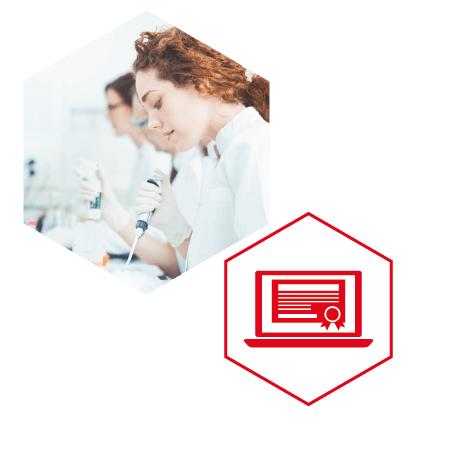ABSTRACT SUBMISSION IS NOW CLOSED
Giorno(s)
:
Ore(s)
:
Minuto(i)
:
Second(s)

Call for Oral Presentations!
Submit your abstract by 9 October 2020 and present your research during the Congress.

Call for Posters
Submit your abstract by 9 October 2020 and present your research during the Congress.

Rules for the submission of abstracts
- Each person is allowed to submit a maximum of two abstracts as a presenting author: either one oral presentation and one poster or, alternatively, two posters. There is no limit to the number of abstracts which can be submitted as a co-author.
- Speakers must pay their congress registration fee by 15 October 2020; any failure to do so will result in exclusion from the program.
- Abstracts should be structured into the following sections if applicable: Context – Objective – Methods – Patient(s) – Intervention(s) – Main Outcome Measure(s) – Result(s) – Conclusions. Maximum lenght: 2500 characters.
- The Scientific Committee will consider accepting as posters those abstracts not accepted as oral presentations.
- Abstracts can only be submitted online; submissions via email or fax will not be accepted.
- Abstract submission is free of charge.
- Presenting authors of accepted abstracts will pay a reduced registration fee
- The abstracts published in the Scientific Program will be collected in a book of abstract published as a special issue of GREM
| Congress Registrations | Fee |
|---|---|
| Delegate | € 500 |
| Abstract submitter | € 350 |
| Abstract submitter Junior (under 35) | € 100 |
Topics for abstracts
1. GYNECOLOGICAL ENDOCRINOLOGY
1.1 Reproductive Neuroendocrinology
1.1 Regulation of the HPG axis
1.2 FSH and LH receptors
1.3 Hyperprolactinemia
1.4 GnRH analogues and antagonists
1.5 Steroids and steroid receptors signaling mechanisms
1.6 Biological actions of progestins
1.7 Androgens and hyperandrogenisms
1.8 Primary and secondary amenorrhea
1.9 Polycystic ovary syndrome
1.10 Insulin resistance
1.11 Obesity, metabolic syndrome
1.12 Pediatric and adolescent endocrinology
1.13 Thyroid diseases
1.14 Endocrine disorders and woman’s health
1.15 Endocrine disruptors
1.16 Selective steroid receptor modulators
2. CONTRACEPTION
2.1 New compounds for contraception
2.2 Non-contraceptive benefits of contraceptives
2.3 Male contraception
2.4 Emergency contraception
2.5 Medical and surgical abortion
2.6 Intrauterine contraceptives
2.7 Contraception and adolescents
2.8 Contraception and perimenopause
2.9 Therapeutic uses of HC
2.10 Long lasting contraception
3. MEDICALLY ASSISTED PROCREATION
3.1 Embryo implantation and development
3.2 Stem cells and human reproduction
3.3 Mechanisms of follicle selection and development
3.4 Reproduction, the Immune system and oxidative stress
3.5 The infertile couple
3.6 Techniques in MAP
3.7 Ovulation induction
3.8 Ovarian hyperstimulation
3.9 Endometriosis and assisted reproduction
3.10 The anovulatory patient
3.11 Endocrine disorders and medically assisted procreation
3.12 Adnexal diseases and MAP
3.13 Fertility preservation
3.14 Autologue and heterologue donation
3.15 MAP and ethics
3.16 MAP in premature ovarian insufficiency
3.17 Time Laps
3.18 PGD/PGS
4. OBSTETRICS
4.1 Recurrent abortion
4.2 Extra-uterine pregnancy
4.3 Prenatal diagnosis
4.4 Prenatal medicine
4.5 The placenta and the fetal membranes
4.6 The thyroid and pregnancy
4.7 Immunological disorders and pregnancy
4.8 Endocrine disorders in pregnancy
4.9 Neurodegenerative disorders in pregnancy
4.10 Insulin resistance and obstetric diseases
4.11 Obesity and fetal and maternal risks
4.12 Pregnancy and lifestyle
4.13 Preterm labor and delivery
4.14 Gestational hypertension, pre-eclampsia and eclampsia
4.15 Gestational Diabetes Mellitus
4.16 Normal and abnormal intrauterine growth
4.17 Infectious diseases and pregnancy
4.18 Twin and multiple pregnancies
4.19 Labor induction
4.20 Caesarean Section: pro and con
4.21 Fetal origins of adult diseases
4.22 Postpartum management of high risk
pregnancies
5. GYNECOLOGY
5.1 Stem cells in gynecology
5.2 Angiogenesis and gynecological diseases
5.3 Puberty and adolescent gynecology
5.4 Female sexual function and dysfunction
5.5 Sexually transmitted diseases
5.6 Hormones and gynecological disorders
5.7 Endometrial regulation
5.8 Abnormal uterine bleeding
5.9 Pelvic pain
5.10 Endometrial hyperplasia
5.11 Endometriosis: genetics and hormones
5.12 Medical treatments for endometriosis
5.12 Adenomyosis
5.13 Uterine myomas, medical and surgical
management
5.14 Clinical management of adnexal cysts
5.15 Vulvar and vaginal lesions
6. MENOPAUSE AND AGEING
6.1 Steroid hormones and ageing
6.2 Neurotoxicity, neuronal survival and
hormone protection
6.3 The climacteric syndrome
6.4 Menopause, HRT and CVD
6.5 Menopause, HRT and cancers
6.6 Menopause, HRT and neurodegenerative diseases
6.7 Postmenopausal osteoporosis
6.8 Bisphosphonates, PTH and the boneforming agents
6.9 Selective estrogen receptor modulators
SERM’s
6.10 Progesterone, progestins SPRM’s
6.11 Androgen therapy
6.12 Bio-identical treatments
6.13 Non-hormonal treatments for climacteric women
6.14 Sexual health and dysfunction
6.15 Phytoestrogens
6.16 Plant extrats and steroid receptors
7. GYNECOLOGICAL ONCOLOGY
7.1 Genes and gynecological cancers
7.2 Hormones and gynecological cancers
7.3 Stem cells and gynecological
malignancies
7.4 Proteomics for cancer diagnosis and
treatment
7.5 Screenings and for gynecological cancers
7.6 HPV and HPV vaccines
7.7 Border-line and pre-tumoral lesions
7.8 Clinical management of gynecological
cancers
7.9 Conservative approaches to gynecological
cancers
7.10 New concepts in radio/chemotherapy
7.11 Hormonal therapies for gynecological
cancers
7.12 Pregnancy and cancer
8. THE BREAST
8.1 Breast development and function
8.2 Hormones and the breast
8.3 Benign breast diseases, contraception
and HRT
8.4 Breast carcinogenesis
8.5 Hormones, breast cancer proliferation
and metastasis
8.6 New prognostic and predictive factors
8.7 Anti-estrogens, SERMs and aromatase
inhibitors
8.8 Oncological and aesthetic breast surgery
8.9 Breast cancer and pregnancy
9. GYNECOLOGICAL SURGERY
9.1 Vaginal approaches to pelvic diseases
9.2 Urinary incontinence
9.3 New techniques for pelvic floor defects
correction
9.4 Laparoscopic treatment of pelvic masses
9.5 Laparoscopy, endometriosis
and reproduction
9.6 New treatments of uterine myomas
9.7 Sentinel node biopsy in gynecological
cancers
9.8 Oncological applications of aparoscopy
9.9 Robotic surgery in gynecology
9.10 Multidisciplinary approach to the pelvic floor
10. DIAGNOSIS
10.1 Ultrasound in gynecology and obstetrics
10.2 Interventional ultrasound techniques
10.3 Hysteroscopy
10.4 Colposcopy
10.5 Laparoscopy

